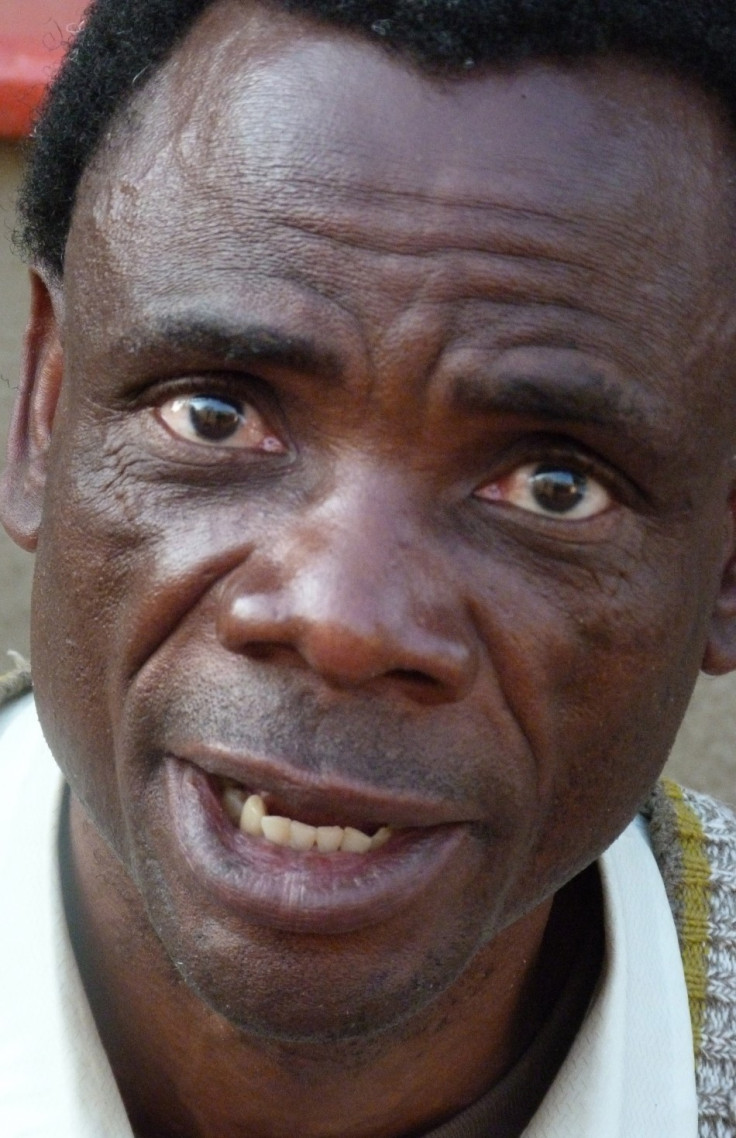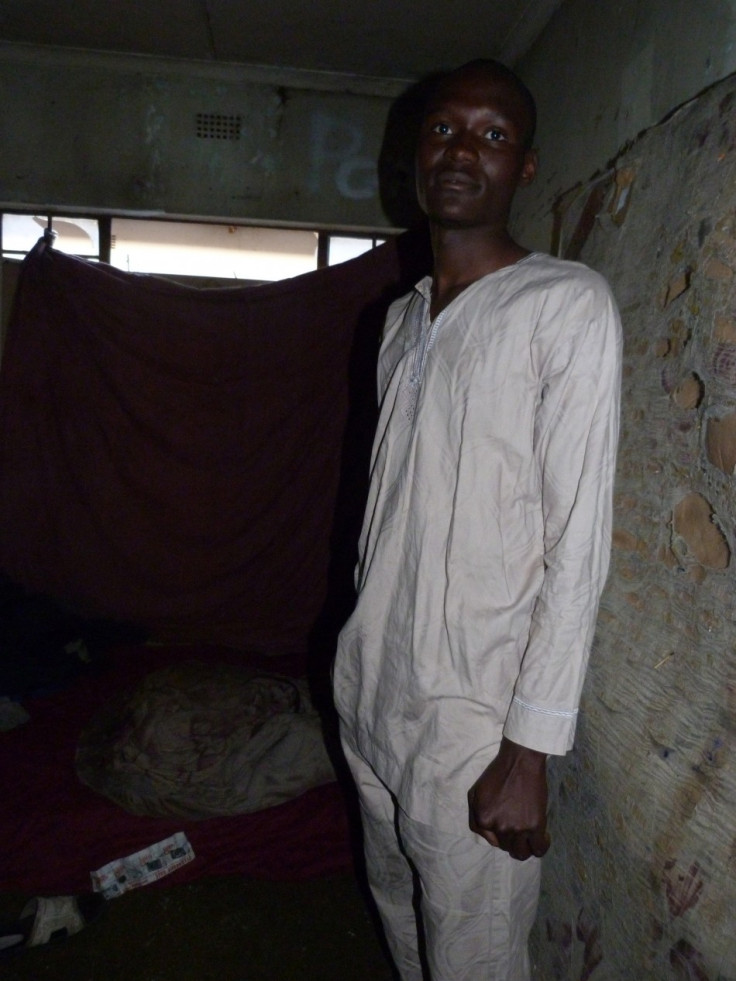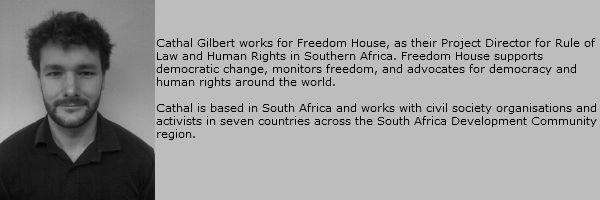For Congolese Refugees, South Africa is not the Promised Land [BLOG]
Cathal Gilbert finds out that South Africa is far from the promised land for refugees from the Democratic Republic of Congo.

"Now is my second time," says Lukozi Bulimwengo, a refugee from the eastern part of the Democratic Republic of the Congo.
I met Lukozi on a sunny August afternoon in Yeoville, a poor area of inner-city Johannesburg, South Africa that is predominantly home to immigrants from the Congo and Nigeria. As we talk, he tells his story in expressively accented English; a story about a life blighted by conflict, exile and uncertainty.
Lukozi first fled the Congo during the rule of Mobuto Sese Seko in 1996 when a devastating ethnic war erupted, forcing many Congolese into neighbouring Tanzania. Following the cessation of violence and the coming to power of Laurent Kabila, Lukozi returned to the Congo only to flee again two years later in 1998, amidst renewed fighting.
He has never gone back.
Like thousands of other Congolese, Lukozi came to South Africa having travelled cross country from Rwanda to Tanzania, through Malawi and then on to Mozambique.
Having requested asylum at the South African border, Lukozi made his way to an area of Johannesburg called Doornfontein, where many refugees from central and east Africa had congregated.
"It was horrible," Lukozi recalls. "We had to pay three rand to sleep on the floor of a dirty, crowded room. It was like living in a prison."
Even three rand (equivalent to 25p at today's exchange rates) was beyond the means of most refugees and so Lukozi and thousands of other refugees like him found casual work handing out leaflets at traffic lights or guarding cars in one of Johannesburg's many upmarket shopping malls.
Cheap labour
At that time, Lukozi recalls that car parking companies used refugees as a source of cheap labour. These companies forced the car guards to provide their own uniforms, forbade them from taking breaks and demanded they hand over all of the tips collected from patrons during 12-hour-long shifts.
At the end of the week, employees were handed a meagre amount of change in a sealed envelope as their wage. Faced with starvation and homelessness, Lukozi had little choice but to accept these conditions for over two years.
Lukozi's experience is fairly typical for refugees arriving in today's South Africa, and the situation is getting worse. According to the United Nations High Commission for Refugees (UNHCR), globally 58.3 percent of applications by refugees from the Congo were accepted in 2010.
In South Africa in the same year, the acceptance figure was only 33 percent, meaning it is nearly twice as likely that a Congolese refugee will be refused status in South Africa than elsewhere in the world. When it comes to figures for refugees from all countries, the South African Department of Home Affairs (DHA) themselves admit to refusing a staggering 131,000 out of 140,000 applications for refugee status in 2010.
According to ProBono.Org, an organization that facilitates pro bono legal assistance for refugees, the picture is worsening.
"The DHA seems to have adopted a view that under no circumstances will refugees be allowed to stay in South Africa," says Odette Geldenhuys, ProBono.Org's Durban Director. "Furthermore there seems to be a sustained operation to remove persons to their countries."
Most of the refugees from the Congo that remain in Johannesburg possess temporary asylum seeker permits that are typically renewed every three to six months. The temporary permits are issued while the DHA makes a final decision on the applications for formal refugee status, a process that can take years in most cases.
Status

The few that are granted the elusive 'status', are allowed to stay, and - crucially - work legally. The vast majority however never reach this stage and remain in limbo for years on end, some living in appalling conditions.
According to Freedom House's Freedom in the World Index, South Africa is rated a 'free' country, because of its respect for civil and politicial freedoms, democratic principles and human rights. When it comes to fulfilling the rights of refugees, however, South Africa is struggling.
Like most other countries, it has signed and ratified the 1951 Refugee Convention, an international agreement that was way ahead of its time in expansively recognising the needs and rights of refugees. The Convention provides that refugees that are merely physically present in a third country obtain a certain body of rights.
Those that have applied for refugee status gain even more rights - such as the rights to earn a living and to freedom of movement - and those that have been granted refugee status gain almost the full complement of rights the citizens of the country are entitled to.
After we spoke, Lukozi invited me to visit a group of Congolese living in Bertrams, another poor part of Johannesburg that is home to a large immigrant population.
We adjusted our eyes to the gloom upon entering the cramped house. Four families live in the entrance room, stained sheets hanging from the ceiling in an attempt to divide the living space and provide some privacy.
In total, over 40 people sleep in the four small rooms of this building, mostly crammed together on filthy matresses. There is no electricity supply, one cracked toilet serves the entire house and a leaking tap at the back is the only water source.
When I ask about the three small children that are clinging to the railings of the balcony, I am told that their father had recently travelled to Pretoria in order to have his permit renewed. His application was refused and he was immediately deported.
Now parentless, the children are being taken care of by this transient group of refugees most of whom will only stay here for a few months and then move on in the hope of finding work or better living conditions somewhere else.
Nobody there could tell me what was likely to happen to these children, or if they will ever be able to be reunited with their father.
It would be easy to blame the South African government for failing to live up to their responsibility towards these refugees.
Applications
On the other hand, as the UNHCR reports, in 2011 South Africa received one in ten of the world's asylum applications, dealing with 107,000 cases. The United States of America, by contrast received 71,000 applications.
According to the UNHCR: "Between 2006 and 2011, South Africa registered more than 816,000 new asylum applications, making it by far the top destination for asylum-seekers for this six-year period."
About half of this number came from neighbouring Zimbabwe. This is a significant burden to bear for a country that is already dealing with the legacy of apartheid, massive inequality, 25 percent unemployment and stubbornly high poverty levels.
Nevertheless, South Africa does have a responsibility towards people who have been driven from their homes because of conflict and who cannot return because they fear for their lives.
Over six million people have been killed in eastern Congo since 1996 and whole communities there have been torn apart by the violence and rape that has accompanied the plundering of natural resources.
The Refugee Convention is clear on the principle of non refoulement - even if a refugee cannot be accepted, he or she can never be sent back to a country where their life could be endangered.
While South Africa may be unable to cope with the huge influx of refugees, the solution cannot be to send all of them back home.
Established
As we drove back to Yeoville, Lukozi told me how, having lost his job as a car guard, he decided that refugees needed to take matters into their own hands. With a group of fellow Congolese he established Self-Help Christian Refugees Association, a legally-registered NGO run by refugees themselves.

Their aim is to create better conditions for refugees in South Africa, and to improve relations between South African citizens and the refugee community. They hope to break down the barriers of fear between the two communities and in doing so help to change the government's increasingly hostile attitude towards refugees in South Africa.
This is a long and difficult process but one which must involve dialogue with the South African government as they attempt to find ways to provide for the needs of the thousands of refugees hoping to find a better life in their communities.
If this is to happen, South Africa itself will need help from civil society organizations, neighbouring countries in SADC and international allies who can assist it to fulfill the spirit of a Refugee Convention agreed to over sixty years ago.

© Copyright IBTimes 2025. All rights reserved.





















